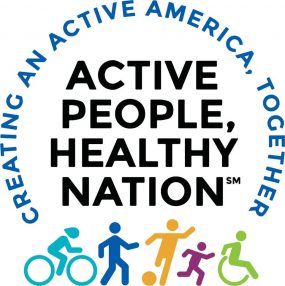Surveillance Systems
Several national and state surveys track physical activity for US adults and young people. The following information compares the surveillance systems used by CDC to track physical activity behaviors and will help explain physical activity assessment.
Assessing Physical Activity
Physical activity can be assessed in three general ways—questionnaire, observation and direct measurement, or diary. Once data from each of these assessment methods are gathered, indicators of energy expenditure or estimates of physical activity are obtained.
Once assessment is completed, responses must be summarized for reporting and research purposes. Methods to create summary scores from physical activity questionnaires can result in either continuous scores (i.e., total kilocalories expended in physical activity over a given time period) or categorical scores (i.e., low, medium, or high levels of physical activity).
A frequently used scoring algorithm in US national surveys relies on an external standard (such as the Health and Human Services’ Physical Activity Guidelines for Americans, 2nd edition). Individual survey respondents are often classified into three basic levels:
- Active (meeting the guidelines).
- Insufficiently active (some reported physical activity but not enough to meet the guidelines).
- Inactive (no reported physical activity).
Six U.S. National Surveys for Physical Activity
Each of the six surveys listed have a different purpose and use a distinct set of questions. Compiling and evaluating data from all sources allows a more complete picture of the physical activity levels and trends among Americans than can be obtained from evaluating results from a single survey alone.
Behavioral Risk Factor Surveillance System (BRFSS): BRFSS began in 1984, and is a telephone survey that provides ongoing data on major behavioral risk factors among American adults, with an emphasis on state-level surveillance. Currently data are collected monthly in all 50 states, the District of Columbia, American Samoa, Palau, Puerto Rico, the US Virgin Islands, and Guam.
National Health Interview Survey (NHIS): NHIS data are collected on a broad range of health topics through personal household interviews. NHIS has been used to monitor the health of the nation since 1957. The survey provides national-level estimates about the health of Americans that can be used to track progress toward national health objectives such as Healthy People 2030external icon.
National Health and Nutrition Examination Survey (NHANES): NHANES provides information about the health of Americans through a combination of personal interview and direct physical examination. The survey began in the 1960s and examines a nationally representative sample of about 5,000 people each year.
Youth Risk Behavior Surveillance System (YRBSS): The YRBSS was developed in 1990 to monitor priority health risk behaviors that contribute markedly to the leading causes of death, disability, and social problems among adolescents in the United States. YRBSS includes a national school-based survey conducted by CDC as well as state, territorial, tribal, and local surveys. Physical activity data are collected every 2 years and are used to monitor progress toward Healthy People 2030external icon objectives.
National Survey of Children’s Health (NSCH)external icon: The NSCH is a self-administered mail- and web-based survey conducted annually by the US Census Bureau. One child per household is randomly selected, and a parent or guardian is given an age-specific topical survey regarding the child, to report as an adult proxy.
National Household Travel Survey (NHTS)external icon: NHTS, formerly known as the Nationwide Personal Transportation Survey and the American Travel Survey, is a survey of US travel modes, commuting habits, and long-distance trips conducted by the US Department of Transportation.
International Physical Activity Questionnairesexternal icon
A set of instruments that can be used internationally to obtain comparable estimates of physical activity.

